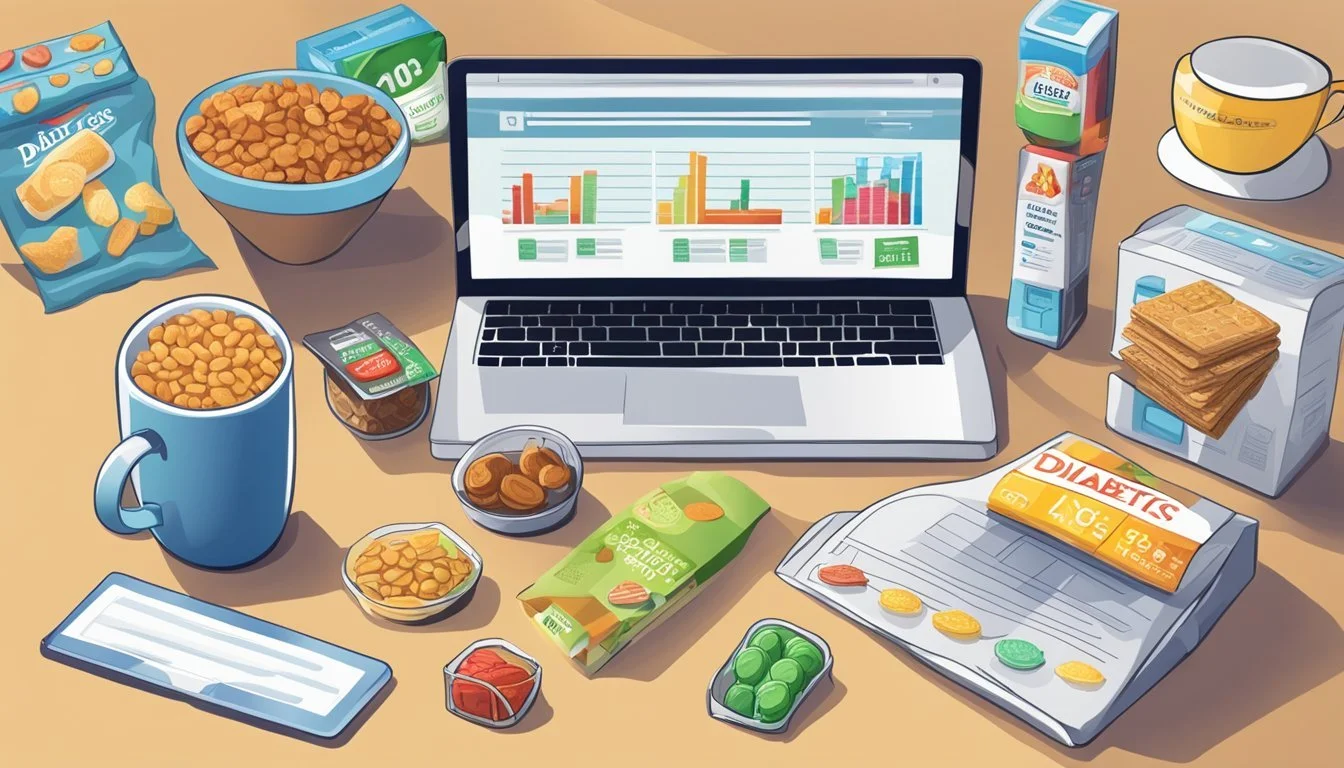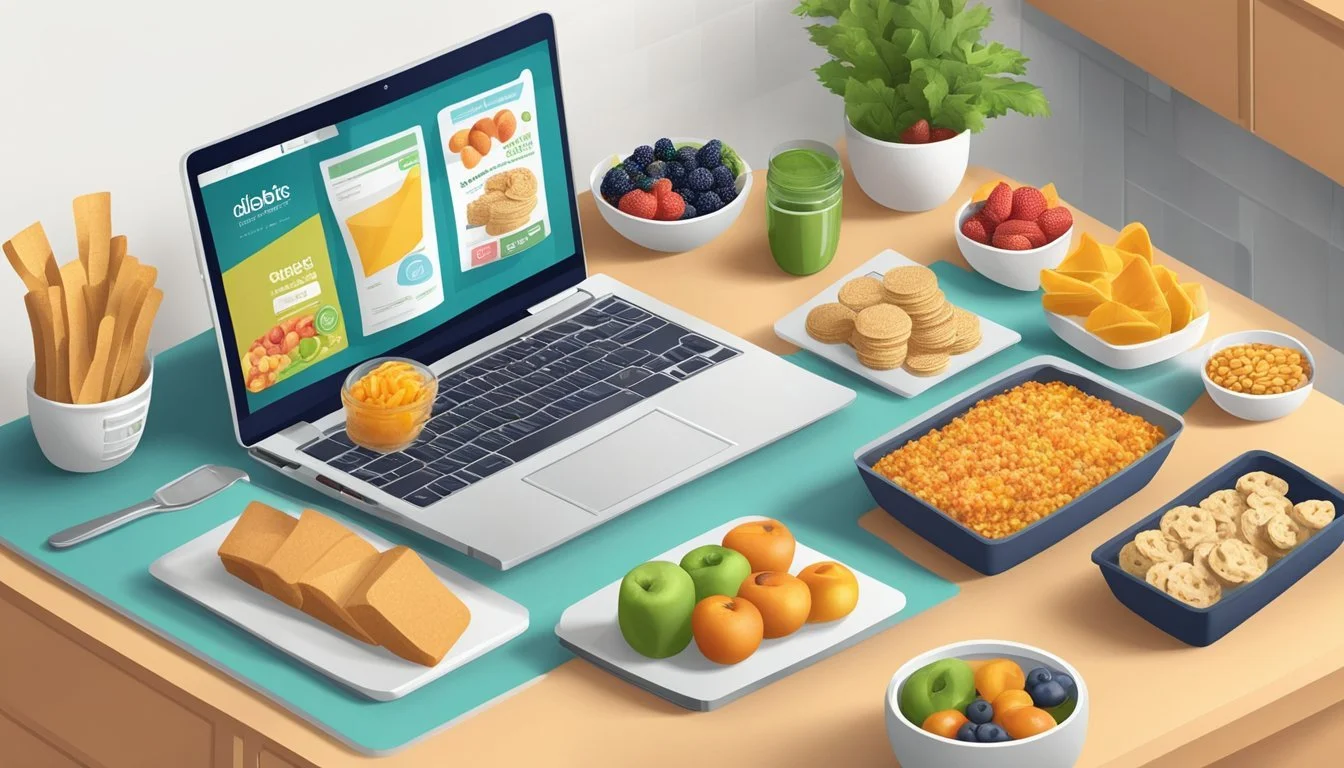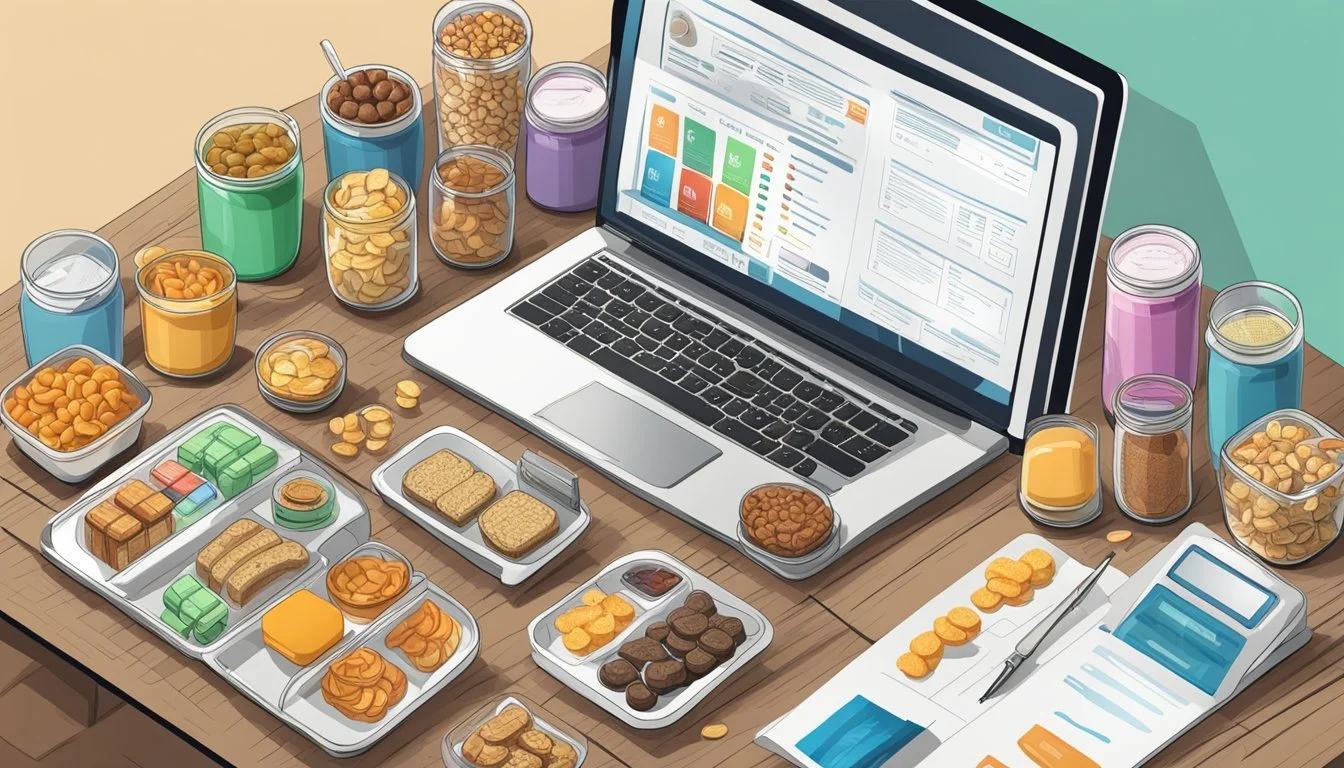Where to Buy Diabetic-Friendly Snacks Online
A Comprehensive Guide
Living with diabetes doesn't mean sacrificing delicious snacks. The convenience of buying diabetic snacks online has made it easier than ever to manage blood sugar levels while satisfying cravings. Many online retailers now offer a wide selection of diabetes-friendly snacks that are low in carbohydrates and sugar, helping individuals maintain stable glucose levels throughout the day.
These specialty snacks come in various options, from savory nuts and seeds to sweet treats made with sugar alternatives. Online stores often provide detailed nutritional information, allowing shoppers to make informed choices tailored to their dietary needs. Some popular diabetic snack options include protein bars, sugar-free cookies, and portion-controlled fruit and nut mixes.
Purchasing diabetic snacks online not only offers convenience but also provides access to a broader range of products than typically found in local stores. This expanded selection empowers individuals with diabetes to discover new favorites and maintain a diverse, enjoyable diet while effectively managing their condition.
Understanding Diabetes and Nutrition
Proper nutrition plays a crucial role in managing diabetes and maintaining overall health. A balanced diet helps control blood sugar levels and supports the body's functions.
The Role of Diet in Managing Diabetes
Diet is a key factor in diabetes management. Monitoring carbohydrate intake is essential, as carbs have the most significant impact on blood sugar. Choosing complex carbohydrates over simple sugars can help stabilize glucose levels.
Protein and healthy fats are important components of a diabetic diet. They provide sustained energy and help slow the absorption of carbohydrates. Fiber-rich foods aid in blood sugar control and promote digestive health.
The glycemic index (GI) is a useful tool for selecting appropriate foods. Low GI foods cause a slower, more gradual rise in blood sugar compared to high GI options.
Nutritional Considerations for Diabetics
Balanced meals and snacks are vital for managing diabetes. Aim for a mix of nutrients in each meal to support steady blood sugar levels. Include lean proteins, healthy fats, and high-fiber carbohydrates.
Portion control is crucial. Even healthy foods can raise blood sugar if consumed in large quantities. Using measuring tools or the plate method can help with appropriate serving sizes.
Timing of meals and snacks affects blood sugar management. Consistent meal timing helps regulate glucose levels and insulin production. Spacing meals evenly throughout the day can prevent sharp spikes or drops in blood sugar.
Hydration is often overlooked but remains important. Water helps flush excess glucose from the body and supports overall health. Choose water or unsweetened beverages over sugary drinks.
Choosing Healthy Snacks
Selecting nutritious snacks is crucial for managing blood sugar levels and maintaining overall health. The right choices can provide steady energy and essential nutrients without causing sharp spikes in glucose.
Macronutrients and Blood Sugar Control
Balancing carbohydrates, proteins, and fats is key for blood sugar management. Carbs have the most immediate impact on glucose levels. Opt for complex carbohydrates from whole grains, fruits, and vegetables. These release energy slowly and provide fiber.
Proteins help stabilize blood sugar and promote fullness. Good sources include nuts, seeds, Greek yogurt, and hard-boiled eggs. Healthy fats from avocados, olive oil, and fatty fish can slow digestion and glucose absorption.
Aim for snacks that combine these macronutrients. A small apple with almond butter or whole grain crackers with cheese offer balanced nutrition.
Snack Ideas for Balanced Blood Sugar
• Veggie sticks with hummus • Mixed nuts and seeds (1 oz portion) • Greek yogurt with berries • Whole grain toast with avocado • Cheese stick with a small piece of fruit
These options provide a mix of nutrients to help maintain steady glucose levels. Fruits and veggies offer vitamins, minerals, and fiber. Nuts, seeds, and dairy products contribute protein and healthy fats.
Portion control is essential. Even healthy snacks can raise blood sugar if consumed in large amounts. Use measuring tools or pre-portioned snack packs to manage serving sizes.
Ingredients to Avoid in Snacks
When choosing packaged snacks, check labels carefully. Avoid products with added sugars, which can cause rapid blood sugar spikes. Common names include sucrose, high fructose corn syrup, and dextrose.
Limit snacks high in refined carbohydrates like white flour. These lack fiber and can lead to quick glucose increases. Trans fats and excessive saturated fats should also be minimized.
Look out for hidden sodium, as high salt intake can affect blood pressure. Choose snacks with recognizable, whole food ingredients. Artificial sweeteners may seem like a good alternative, but some studies suggest they might impact blood sugar control.
Reading Food Labels
Reading food labels is crucial for managing diabetes and making informed snack choices. It allows you to assess nutritional content, identify hidden sugars and fats, and select products that align with your dietary needs.
Understanding Nutritional Information
Food labels provide essential data about serving sizes, calories, and key nutrients. The Nutrition Facts panel lists total carbohydrates, which is vital for diabetes management. Check fiber content, as it can help slow glucose absorption. Protein and fat amounts are also important to note.
Look for labels that display percent daily values (%DV) to gauge how a food fits into your daily nutritional requirements. Pay attention to sodium levels, aiming for products with less than 140mg per serving. Compare similar products to make the best choices.
Many labels now include added sugars separately from total sugars, helping you distinguish between naturally occurring and added sweeteners.
Identifying Hidden Sugars and Fats
Scrutinize ingredient lists to spot hidden sugars and unhealthy fats. Sugar can appear under various names, including:
Fructose
Dextrose
Maltose
Corn syrup
Cane juice
Look for these terms near the beginning of the ingredient list, as ingredients are listed by weight in descending order.
For fats, avoid products with partially hydrogenated oils, which indicate trans fats. Opt for snacks with healthier fat sources like nuts or avocado. Be cautious of "low-fat" claims, as these products may contain added sugars to compensate for flavor.
Check serving sizes carefully. Some packages may appear to be single-serving but actually contain multiple servings, potentially leading to overconsumption.
Shopping for Diabetic Snacks Online
Online shopping offers convenience and a wide selection of diabetic-friendly snacks. Many reputable retailers and brands now cater to those managing blood sugar levels.
Reputable Online Retailers and Brands
Amazon provides a large selection of diabetic snacks from various brands. They offer low-sugar cookies, sugar-free candies, and protein bars suitable for people with diabetes. Specialty sites like ADW Diabetes stock whole grains, nuts, and omega-3 rich foods.
Brands like Rip Van offer low-sugar sandwich cookies designed for diabetics. Nature's Bakery and Kind produce fiber-rich, lower glycemic index snack bars. Atkins and Quest manufacture low-carb protein snacks popular among those watching blood sugar.
Always check customer reviews and ratings before purchasing from a new brand or retailer. This helps ensure product quality and reliability.
How to Assess Snack Options Online
When shopping for diabetic snacks online, carefully review nutrition labels. Look for snacks with low sugar content, typically 5 grams or less per serving. Choose foods with a low glycemic index (GI) rating of 55 or less.
Fiber content is important. Opt for snacks with at least 3 grams of fiber per serving. This helps slow sugar absorption. Check for healthy fats from nuts, seeds, or plant-based oils.
Compare serving sizes between products. Some may appear lower in carbs but have tiny portions. Read ingredient lists to avoid hidden sugars or unhealthy additives.
Consider convenience. Single-serve packages can help with portion control for on-the-go snacking. Look for shelf-stable options that don't require refrigeration for easy storage.
Recommended Snacks and Ingredients
Diabetic-friendly snacks focus on nutrient-dense options that provide balanced nutrition without causing blood sugar spikes. These snacks often incorporate whole foods, lean proteins, healthy fats, and complex carbohydrates.
Nutrient-Dense Snacks for Diabetics
Greek yogurt paired with berries offers protein and antioxidants. A small handful of almonds or mixed nuts provides healthy fats and protein. Hard-boiled eggs make an excellent portable snack rich in nutrients. Tuna on whole grain crackers combines lean protein with complex carbs.
Vegetable sticks with guacamole or hummus deliver fiber and healthy fats. Cottage cheese topped with sliced peaches adds protein and natural sweetness. Edamame beans are packed with plant-based protein and fiber.
Air-popped popcorn offers a satisfying crunch with fewer carbs than chips. For a sweet treat, a square of dark chocolate (70%+ cocoa) provides antioxidants with minimal sugar.
Snack Recipes and DIY Options
Create trail mix with unsweetened dried fruits, nuts, and seeds for a balanced energy boost. Mix Greek yogurt with cinnamon and a touch of stevia for a protein-rich dip for apple slices.
Blend chickpeas, olive oil, and spices for homemade hummus. Spread on cucumber rounds for a refreshing snack. Roll turkey slices with avocado and lettuce for a quick protein wrap.
Bake kale chips seasoned with olive oil and sea salt for a nutrient-dense alternative to potato chips. Prepare chia seed pudding with unsweetened almond milk and berries for a fiber-rich treat.
Roast chickpeas with spices for a crunchy, high-fiber snack. Create energy balls using dates, nuts, and unsweetened cocoa powder for a natural sweet fix.
Nutritional Support and Guidance
Managing diabetes through proper nutrition is crucial for maintaining stable blood sugar levels. Professional guidance can help individuals make informed choices about their diet and snacking habits.
Consulting with a Registered Dietitian
A registered dietitian specializes in creating personalized meal plans tailored to individual needs. They can provide expert advice on carbohydrate counting, portion control, and selecting appropriate snacks for diabetes management.
Dietitians offer guidance on reading food labels and understanding glycemic index values. This knowledge empowers patients to make better snack choices when shopping online or in stores.
Diabetes educators often work alongside dietitians to offer comprehensive support. They can teach patients how to incorporate healthy snacks into their daily routine while considering factors like medication timing and physical activity levels.
Regular consultations with these professionals help patients stay updated on the latest nutritional research and diabetes management strategies. This ongoing support is invaluable for making sustainable lifestyle changes and achieving long-term health goals.
Maintaining Balance and Enjoyment
Incorporating treats into a diabetic diet can enhance satisfaction and promote long-term adherence. Finding the right balance allows individuals to enjoy foods they love while managing blood sugar levels effectively.
Incorporating Treats in Moderation
Moderation is key when including treats in a diabetic meal plan. Selecting portion-controlled snacks helps maintain blood sugar stability. Pre-packaged diabetic-friendly cookies or small servings of dark chocolate can satisfy cravings without causing significant spikes.
Planning ahead is crucial. Allocate a specific number of carbohydrates for treats within daily meal plans. This approach allows for enjoyment while staying within dietary guidelines.
Pairing treats with protein or fiber-rich foods can help slow sugar absorption. For example, combining a small piece of fruit with nuts or cheese creates a balanced snack.
Timing matters too. Consuming treats after a meal rather than on an empty stomach can minimize blood sugar fluctuations. Regular blood glucose monitoring helps individuals understand how different treats affect their levels.
Exploring healthier alternatives to favorite snacks can be rewarding. Sugar-free jello, frozen Greek yogurt bars, or homemade trail mix with nuts and a sprinkle of dark chocolate chips offer satisfying options.






